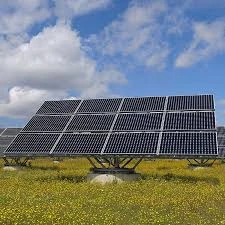off grid solar power system
Off-Grid Solar Power Systems Harnessing Nature's Energy
As the world increasingly confronts escalating energy demands and environmental concerns, off-grid solar power systems have emerged as a promising alternative to traditional energy sources. These systems not only provide independence from the conventional power grid but also promote sustainable energy consumption and environmental stewardship. This article explores the intricacies of off-grid solar power systems, their benefits, components, and the considerations required for successful implementation.
Understanding Off-Grid Solar Power Systems
An off-grid solar power system is designed to operate independently of a utility grid. It generates electricity solely from sunlight, storing energy for use when sunlight is not available. This system is particularly beneficial in remote locations where access to the grid is unavailable or unreliable. It plays a vital role in enhancing energy accessibility in rural communities and promotes energy self-sufficiency.
Key Components of an Off-Grid Solar System
1. Solar Panels The most crucial component, solar panels, convert sunlight into electricity. They are usually made of silicon and come in various types, including monocrystalline, polycrystalline, and thin-film. The choice of solar panels depends on factors such as efficiency, available space, and budget.
2. Charge Controller This device regulates the voltage and current coming from the solar panels to the batteries, ensuring optimal charging and preventing overcharging, which can damage the battery. It plays a critical role in maintaining the lifespan and efficiency of the energy storage system.
3. Batteries Energy storage is essential for off-grid systems, allowing users to store excess energy generated during the day for use at night or during periods of low sunlight. Common types of batteries used include lead-acid and lithium-ion, each with its advantages and disadvantages regarding cost, lifespan, and efficiency.
4. Inverter Since most household appliances run on alternating current (AC), an inverter is necessary to convert the direct current (DC) stored in batteries into AC electricity. Inverters are available in various sizes and capacities, depending on the energy needs of the home or facility.
5. Backup Generator (Optional) In some installations, a backup generator can be included to provide additional power during extended periods of low sunlight or high energy demand. While solar systems are designed to be self-sufficient, a generator can act as a safety net for users who may require consistent energy availability.
off grid solar power system

Benefits of Off-Grid Solar Power Systems
1. Energy Independence One of the most appealing aspects of off-grid solar power is the independence it offers. Homeowners can generate and consume their own energy without relying on utility companies, reducing vulnerability to rising electricity prices and power outages.
2. Environmental Impact Off-grid solar systems contribute significantly to reducing carbon footprints. They rely on renewable energy sources, minimizing the need for fossil fuels and decreasing greenhouse gas emissions.
3. Lower Operating Costs While the initial investment in solar technology can be significant, the long-term savings are substantial. Users can save on monthly electricity bills and maintenance costs, often recouping their investment within a few years.
4. Accessibility Off-grid systems provide electricity to remote and underserved areas without the need for extensive and costly infrastructure development. This accessibility can improve the quality of life for individuals living in rural regions, enabling better education, healthcare, and economic opportunities.
Considerations for Implementation
While off-grid solar power systems offer numerous advantages, potential users should consider several factors before installation. Careful planning is essential to assess energy needs accurately, ensuring the system is appropriately sized to provide sufficient power. Additionally, users should evaluate local regulations and incentive programs that may influence costs and installation processes.
Conclusion
Off-grid solar power systems represent a viable solution for a sustainable and self-sufficient energy future. With their ability to harness the sun's energy, reduce environmental impact, and provide independence from traditional power sources, these systems are becoming increasingly popular. As technology continues to evolve and costs decrease, more individuals and communities will harness the power of solar energy, paving the way for a cleaner and more sustainable world. Embracing these systems is not just an investment in energy; it's a step towards a more sustainable and resilient future.
-
String Solar Inverter: The High-Efficiency Solution for Smart Solar EnergyNewsJul.14,2025
-
Revolutionizing Rooftop Energy with the Power of the Micro Solar InverterNewsJul.14,2025
-
Power Independence with Smart Off Grid Solar Inverter SolutionsNewsJul.14,2025
-
On Grid Solar Inverter: Powering the Future with Smart Grid IntegrationNewsJul.14,2025
-
Monocrystalline Solar Panels: High-Efficiency Power for the Future of Clean EnergyNewsJul.14,2025
-
Bifacial Solar Panel: A Smarter Investment for Next-Generation Energy SystemsNewsJul.14,2025







